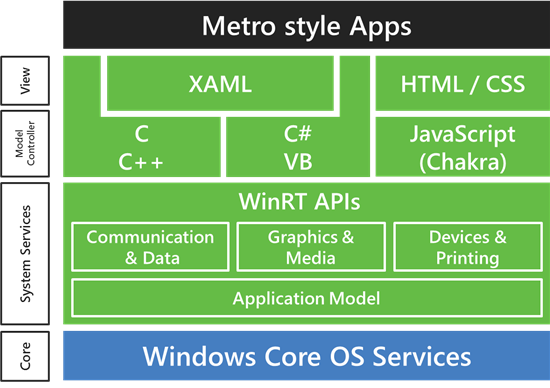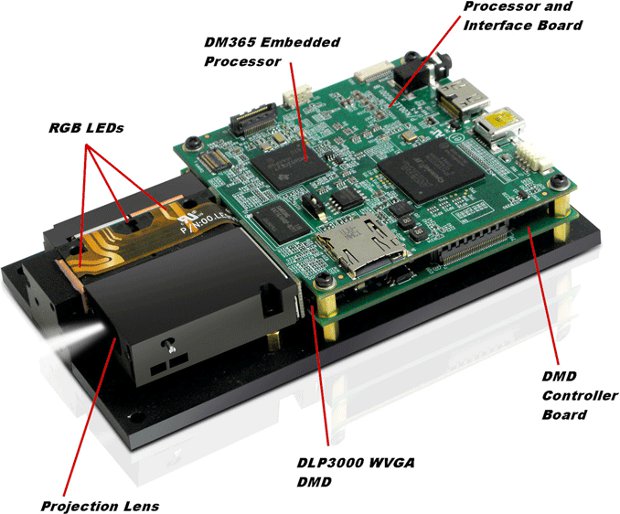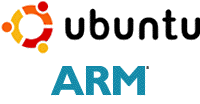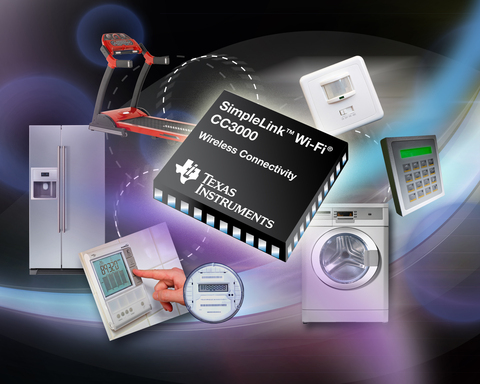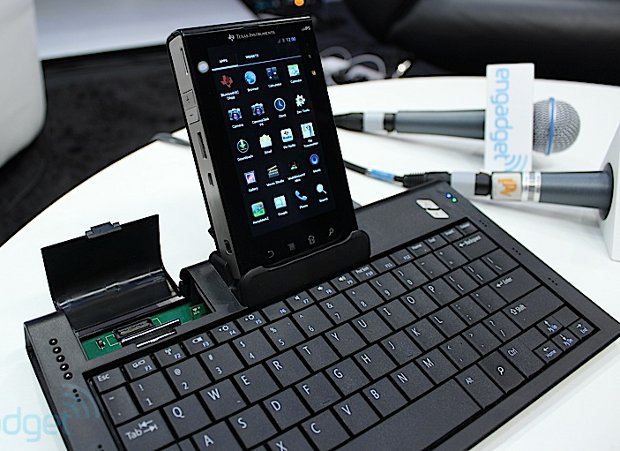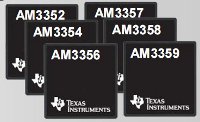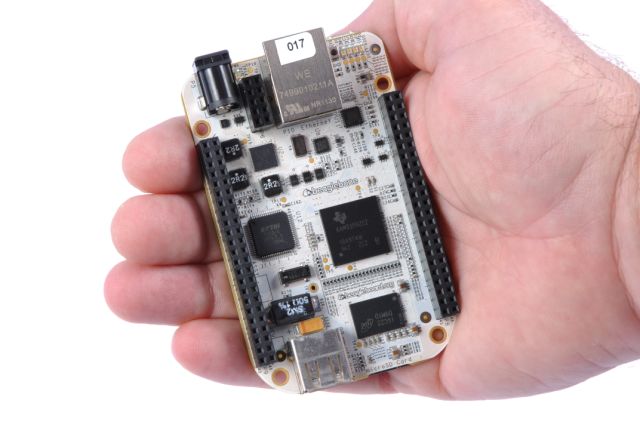Steven Sinofsky, President of the Windows Division at Microsoft, has written a long blog post entitled “Building Windows for the ARM processor architecture” where he explains how Windows On ARM (WOA) will be deployed, the steps they took to develop it and what developers can do to program or port existing apps to Windows 8. Here are some keys and interesting points I noted: WOA and Windows 8 for x86/64 PCs will ship at the same time and the user experience should be the same for consumers on both platform. WOA PCs will be powered by Texas Instruments, Nvidia and Qualcomm processors. Microsoft will release an Unified OS Binary for WOA – That means one binary will run on all platforms (be it TI, Nvidia or Qualcomm). That seems impressive, and something Linux is not capable of, although much work is done on that and a unified linux kernel should […]
Texas Instruments Pico Projector Module: DLP LightCrafter
Texas Instruments announced the DLP LightCrafter, a Pico Projector evaluation module. This module is powered by an ARM9 TMS320DM365 processor @ 300 Mhz (with 1080p video co-processor) running Embedded Linux. It features a 20-lumen RGB LED light engine and projector, as well as TI DLP 0.3 WVGA chipset. The DLP LightCrafter EVM is intended to bring DLP (digital light processing) devices faster to market and targets the industrial, medical, security and scientific instrument markets with devices such as pico projectors, 3D fingerprint scanners and 3D printers. The DLP LightCrafter incorporates TI DLP3000-C300REF reference design with includes the 0.3 WVGA chipset, TMS320DM365 embedded processor and MSP430 micro-controller. Here are the key features of the DLP LightCrafter: 20 lumen light output WVGA resolution (608×684 native) Up to 4kHz binary pattern rate Configurable I/O trigger DM365 embedded processor (ARM926E-JS) 128MB NAND flash memory USB, Mini HDMI, UART interfaces Dimensions: 117mm x 65mm […]
The Past, Present and Future of Ubuntu for ARM
David Mandala of Canonical talked at Linux.Conf.Au on 18th of January 2012 about Ubuntu for ARM and the move from netbook to server support. You can read my notes below, or jump at the end of this post to watch the presentation. The Past 2008: Ubuntu decides to only support ARMv7 architecture vs. Debian that supports ARMv4 and above. 2009: Ubuntu release for Freescale i.MX51 (ARMv5 built), and then Marvell ARMAVA with ARMv6 and VFP (ARM floating point unit) support. 2010: April (10.04) The first ARMv7 release for OMAP3 (Beagleboard) with VFP, Thunb2, NEON and SMP for ARM and first netbook edition October (10.10) Pandabord (OMAP4) release with initial device tree support for ARM. Starts work with Linaro. 2011: 11.04 (5th release) – Supports OMAP3 and OMAP4 only. The netbook edition is using Qt, further improvement to device tree, further work with linaro and on the way to the Unified […]
TI SimpleLink Wi-Fi CC3000 Brings WiFi Connectivity to All Devices
Yesterday, Texas Instruments unveiled the SimpleLink product family, a portfolio of wireless connectivity technologies for low-power, low-cost embedded applications, which includes self-contained wireless processors supporting Wi-Fi, ZigBee, 6LoWPAN, and ANT. The most noticeable product is the SimpleLink Wi-Fi CC3000, a self-contained 802.11 (WiFi) network processor, that can be added to any embedded application and provide WiFi connectivity to the Internet of Things. With this solution, you can add WiFi to any device, even those powered by MCUs without operating systems such as dishwashers, toasters, refrigerators, thermostats, and factory automation equipment. I wish they’ll make new version of the MSP430 Chronos Wireless Watch with WiFi connectivity, this would remove the need for the RF Dongle. This solution features TCP, UDP and IP software stacks in the chip, it consumes 0.5% of the resources as compared to traditional Wi-Fi and only requires 6KB Flash and 3KB RAM. The company claims it can be […]
Texas Instruments OMAP 5 Reference Design
Texas Instruments announced it was developing the OMAP 5, the first Cortex A15 processor, in February 2012. This year at CES 2012, Texas Instruments unveiled OMAP 5-based reference design / development platform running Android 4.0.1 to Engadget. Remi El-Ouazzane, VP of OMAP at Texas Instruments, explains: “This is the greatest platform on Earth right now… way ahead of Apple, and it’s the first Cortex-A15 (which runs 2x faster than the Cortex-A9) product on the market. When running two Cortex-A15 chips at 800MHz, it’s more or less the same performance as running two Cortex-A9s at 1.5GHz. You’ll see [commercially available products] ramping up with this stuff in late 2012 or early 2013. We are also running Windows 8 on the latest OMAP; it runs perfectly well, and we’ve been working very closely with Microsoft. We’re working on multiple form factors — tablets, thin-and-lights — and we think ARM is going to […]
Board Bringup: LCD and Display Interfaces – ELCE 2011
Presentation “Board Bringup: LCD and Display Interfaces” by David Anders, Texas Instruments, at Embedded Linux Conference Europe 2011. Board bringup is one of the most under documented aspects of embedded development. This presentation looked at the various display technologies such as DisplayPort, DVI, LVDS, and other LCD interfacing methods with emphasis on how to bringup, debug, and validate them on new hardware. Using a case study, aspects such as interfacing timing, extended display identification data(EDID), and backlight controls have been discussed. Most embedded linux developers at some point in their career will be handed a piece of hardware that is untested. LCD bringup is one of the most challenging assignments for an embedded developer. This presentation intends to provide some core tools and methods for bringup of a new display interface. You can also download the presentation slides Jean-Luc Aufranc (CNXSoft)Jean-Luc started CNX Software in 2010 as a part-time endeavor, […]
TI Unveils Sitara AM335x ARM Series Cortex-A8 Processors
Texas Instruments has just announced the new Sitara AM335X Processors and the low cost Beaglebone development board. The low cost Cortex-A8 SoCs start at 5 US dollars per piece and are aimed at upgrading ARM9 solutions (software compatible) and adding new features such as 3D interfaces and touch screen, high resolution displays with faster performance. Texas Instruments says you could take those new upgraded products to market within 6 months thanks to their inexpensive development board (Beaglebone) and complete SDK. There are six models in the Sitara AM335X series: AM3552: Cortex A8 up to 720 MHz. AM3554: Cortex A8 up to 720 MHz with 3D Graphics (PowerVR SGX GPU). AM3556: Cortex A8 up to 720 MHz with programmable real-time unit (PRU) @ 200 Mhz. AM3557: Cortex A8 up to 720 MHz with PRU @ 200Mhz and EtherCat. AM3558: Cortex A8 up to 720 MHz with 3D Graphics and PRU @ […]
BeagleBone: New 89 USD Beagleboard
The BeagleBone is a low-cost, high-expansion hardware-hacker focused BeagleBoard. It is a bare-bones BeagleBoard that acts as a USB or Ethernet connected expansion companion for your current BeagleBoard and BeagleBoard-xM or works stand-alone. The BeagleBone is smaller than the previous version of BeagleBoards (looks like the business of a credit card) and features TI Sitara™ AM3358 Cortex A8 processor clocked at 700Mhz. The BeagleBone is also able to run a full-featured Linux. Here are the current hardware specifications: TI AM3358 ARM Cortex-A8 @ 700 MHz 256 MB DDR2 RAM Board size: 3.4″ x 2.1″ Shipped with 2GB microSD card with the Angstrom Distribution with node.js and Cloud9 IDE Single cable development environment with built-in FTDI-based serial/JTAG and on-board hub to give the same cable simultaneous access to a USB device port on the target processor Industry standard 3.3V I/Os on the expansion headers with easy-to-use 0.1″ spacing On-chip Ethernet, not […]


